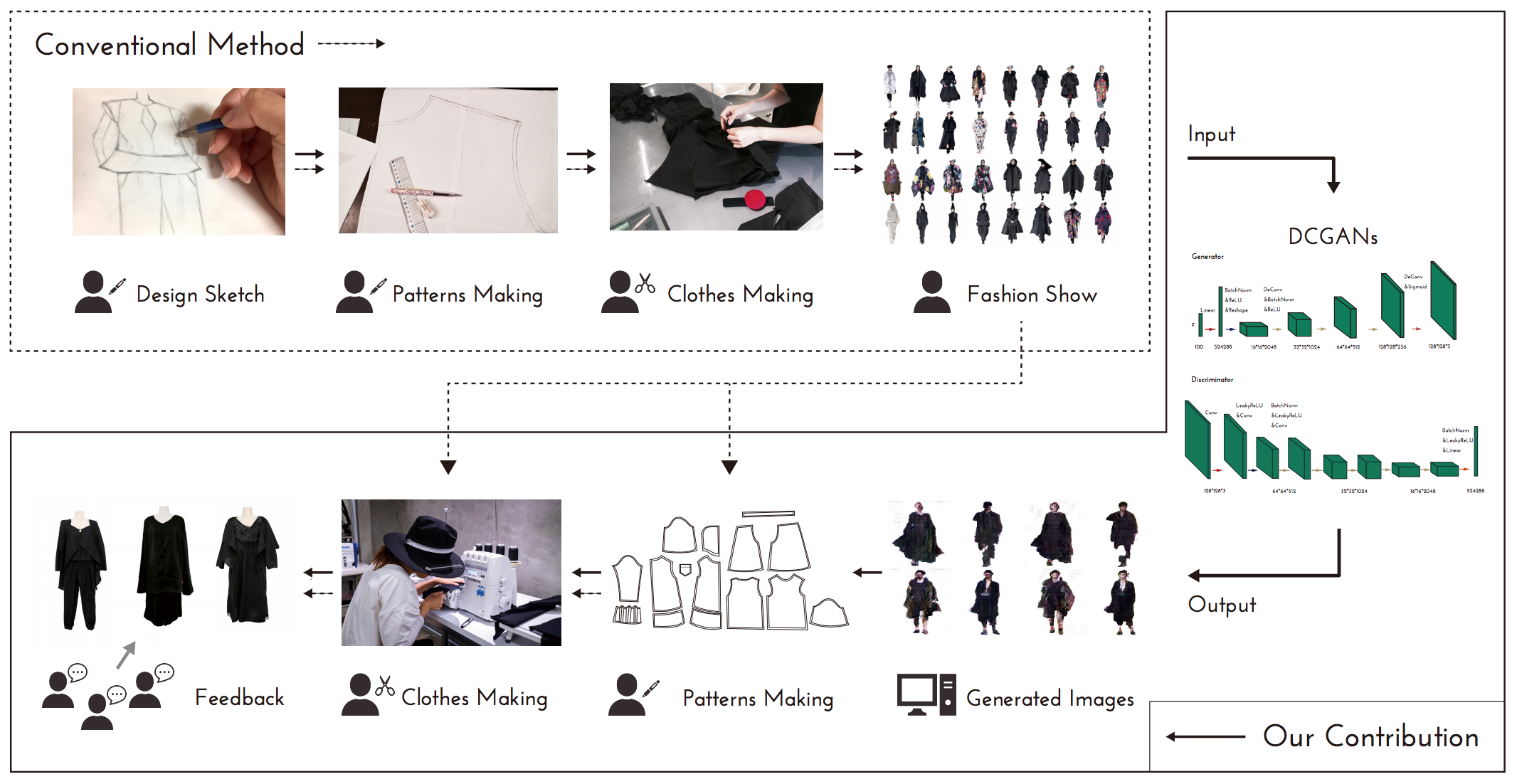報告者:吳柏瑤
報告PPT:20181220書報討論_吳柏瑤
論文名稱:
Deep Wear: a case study of collaborative design between Human and Artificial Intelligence
論文作者:
Natsumi Kato, Hiroyuki Osone, Daitetsu Sato, Naoya Muramatsu, Yoichi Ochiai
University of Tsukuba
論文來源:
Arts Exhibition – ACM TEI Arts Track 2018
Kato, N., Osone, H., Sato, D., Muramatsu, N., & Ochiai, Y. (2018, March). DeepWear: a Case Study of Collaborative Design between Human and Artificial Intelligence. In Proceedings of the Twelfth International Conference on Tangible, Embedded, and Embodied Interaction (pp. 529-536). ACM.
論文流程圖

Our system’s workflow. Conventional fashion design is a feedback loop. First, designers make their clothes design. Next, patterners draw patterns from the design and designers instrucion. The We use DCGANs to make new feedback loop. Fashion design process In this process, making design inspiration easier for designers.
論文摘要
Deep neural network (DNNs) applications are now increasingly pervasive and powerful. However, fashion designers are lagging behind in leveraging this increasingly common technology. DNNs are not yet a standard part of fashion de- sign practice, either clothes patterns or prototyping tools. In this paper, we present DeepWear, a method using deep convolutional generative adversarial networks for clothes design. The DNNs learn the feature of specific brand clothes and generate images then patterns instructed from the images are made, and an author creates clothes based on that. We evaluated this system by evaluating the credibility of the actual sold clothes on market with our clothes. As the result, we found it is possible to make clothes look like actual products from the generated images. Our findings have implications for collaborative design between machine and human intelligence.
